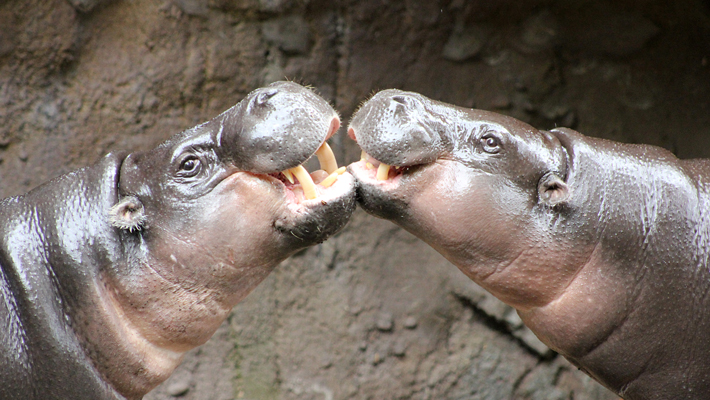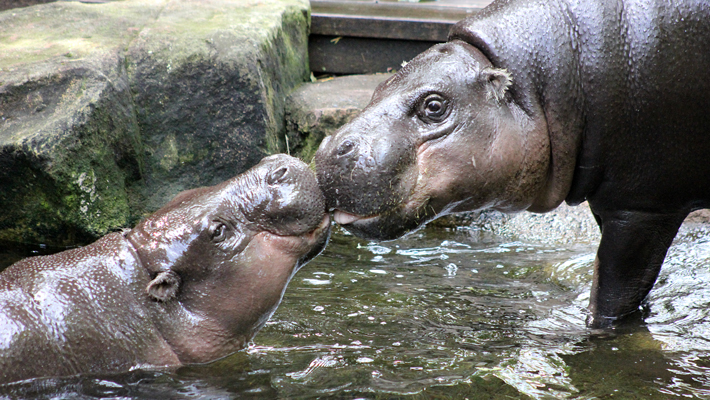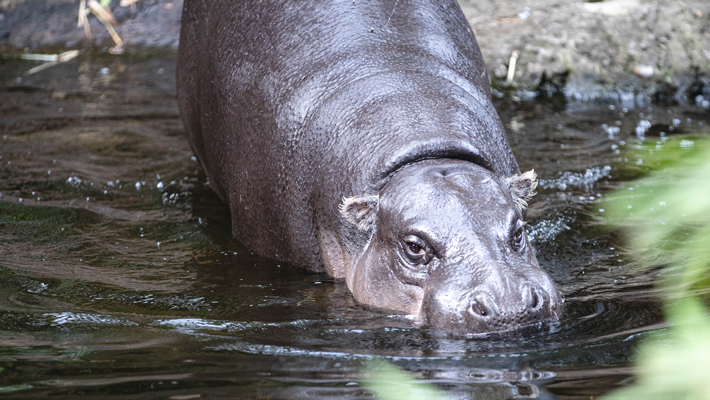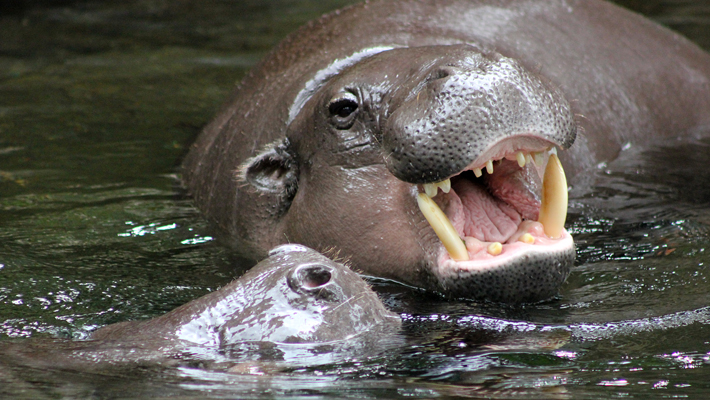Chimpanzee
Occurs in: West Africa, Central Africa and East Africa
Your adventure begins on the grassy hillsides of Central Africa, where a troop of Chimpanzees await your arrival.
Chimpanzees have the widest geographic distribution of all great apes, with a range spanning from as far east as Senegal to as far west as Tanzania. The bulk of the remaining population of the species inhabits the dense forests and jungles of Central Africa, in places like Cameroon and the Congo.
Chimpanzees are our closest living relatives, sharing nearly 99% of our DNA. Not only are they one of only a few species able to fashion and use tools, but they are also capable of communicating with each other using a vast and complex set of vocalisations.
Chimpanzees live in highly complex social groups, and Taronga’s troop of 21 Chimpanzees range in age from matriarch Spitter, who celebrated her 60th birthday earlier this year, to little Niambi, born just a couple of months ago!
Visit the Chimpanzees at map ref. 13K
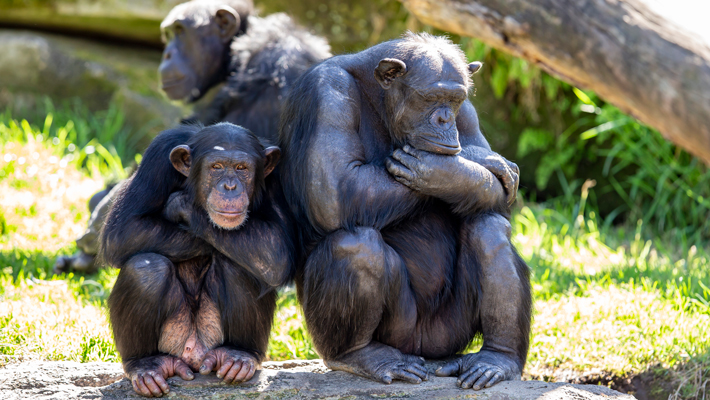

Ring-Tailed Lemur
Occurs in: Madagascar
Next, you’ll set sail for the magical island of Madagascar!
Since splitting from the African mainland more than 100 million years ago, extreme isolation has seen Madagascar go on to develop one of the most distinct ecosystems on earth.
In fact, more than 90% of the mammals on Madagascar exist nowhere else on earth – and one such example is the Ring-Tailed Lemur.
Famous for their striking black-and-white ringed tails, Lemurs are among the most visually stunning of primates. Watch this bachelor group leap from height to height playfully as they forage for fruit, leaves,flowers and insects – or perhaps relax in a meditative pose as they catch an afternoon dose of sunlight.
Visit the Ring-Tailed Lemurs at map ref. 11J
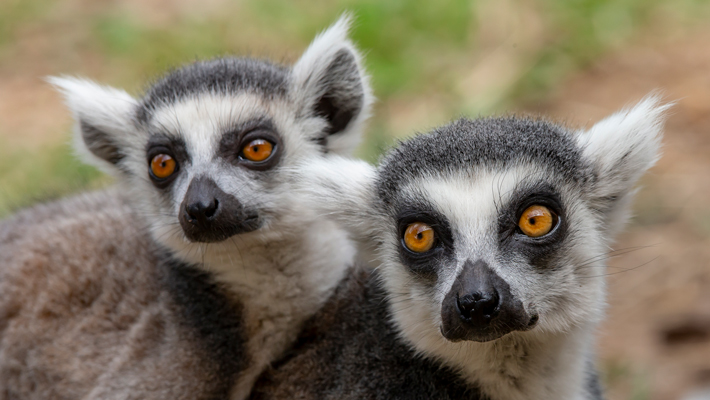

Western Lowland Gorilla
Occurs in: West Africa & Central Africa
The geography and ecology of Central Africa is incredibly diverse. Cameroon, for example, features sweeping desert plains in its north, a rugged mountainous central region and dense rainforest throughout the south.
It is in the depths of these rainforests, like those found in Cameroon, that the largest of the great apes makes its home.
Gorillas are gentle, social and highly intelligent animals who display many of the same behaviours as humans, including laughter.
Like their wild counterparts, Taronga’s Western Lowland Gorilla troop live in a close-knit family group led by dominant Silverback Kibali.
While normally quiet animals, Gorillas use a wide range of vocalisations, from hoots and screams to barks and cries to communicate with one another. Be sure to keep an eager eye out for the youngest member of the troop - one-year-old Fikiri who can be seen clinging close to mum or cheekily taunting her older counterparts.
All four subspecies of Gorilla are now critically endangered, with deforestation, poaching and climate change placing pressure on remaining populations.
Visit the Gorillas at map ref. 10G
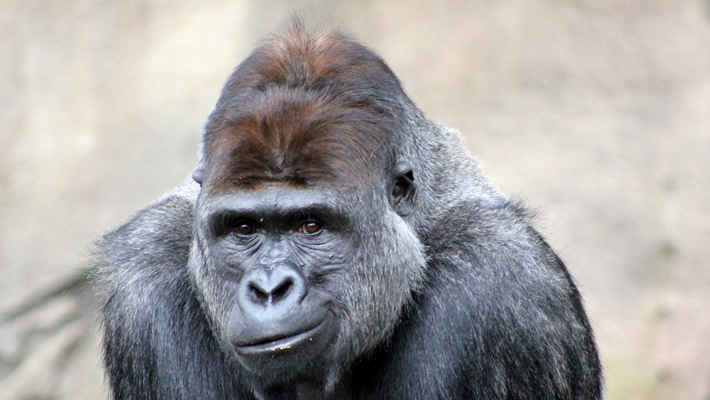

Bongo
Occurs in: West Africa & Central Africa
The jungles and forests of the Congo represent one of the world’s most important remaining wildernesses, supporting a broad range of plant and animal species found nowhere else on Earth.
One such species is the elusive Eastern Bongo; the tallest, heaviest and most visually striking of the African forest antelopes.
Bongos can weigh up to 400 kg and have splendid spiral horns which they lay back along their shoulders by tilting their heads so they can run through the jungle habitat without becoming tangled.
While their brilliant stripey coats provide excellent camouflage from predators when hiding amongst the forest trees, the numbers of this beautiful, mostly nocturnal animal have collapsed in recent years due to human poaching and there are thought to be as few as 100 left remaining in the wild.
Visit the Bongo at map ref. 15E
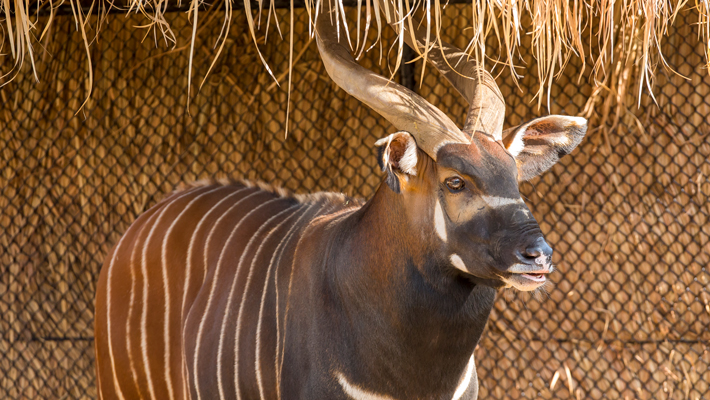

Pygmy Hippopotamus
Occurs in: Liberia, Sierra Leone, Guinea and Ivory Coast
We finish our jungle journey in the swamplands of West Africa. This is Pygmy Hippopotamus country!
You might be more familiar with the Common Hippo, which spends much of its time in the rivers of sub-Saharan Africa. While the Pygmy Hippo certainly loves the water, it has developed a number of unique adaptations that allow it to live a much more semi-aquatic life than its larger relative.
The Pygmy Hippo, just like the Common Hippo, has the ability to close its ears and nose when venturing underwater, however its eyes are positioned towards the side of its head rather than on top to allow it to scan for predators more easily when out of the water.
Its feet are also less webbed than its cousin’s and its legs notably longer to allow for easier movement on land.
On particularly hot days, you might notice the Pygmy Hippo oozing a pink fluid known as ‘blood sweat’ from its pores – its own natural form of sunscreen!
Visit the Pygmy Hippopotamus at map ref. 14D
